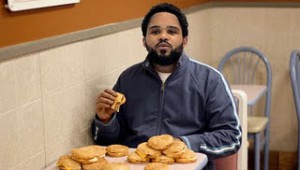Some big player news rumors hit the airwaves this morning; Derek Norris, who two months ago we thought was our opening day starter, is reportedly being put on waivers for the eventual purpose of releasing him. The timing is no accident; his contract is not fully guaranteed for the year and the Nats can get out of paying the full freight and only be on the hook for $700k by doing this. I think Norris obviously gets picked up by another team, but they’ll be waiting so they won’t have to pay hin north of $4M. He’s too good defensively to not get a job, and some team may think he’s a great reclamation project given his past hitting.
(Quick links: ST 2017 hitting stats and pitching stats for the Nats)
Quick implications of the move:
- Looking obvious that our 1-2 catching punch will be Matt Wieters and Jose Lobaton. Hard to see Pedro Severino as anything but AAA insurance for the time being.
- This also thins our Catcher ranks: past Severino is just Raudy Read in terms of depth. I’m hoping Spencer Kieboom makes it through waivers …
- This puts the Nats 40-man roster at 39/40, leaving one spot for a quick add for someone at the end of spring training. We’ve been talking about Vance Worley being an arm that makes sense at the back of the bullpen, but he’s not impressed so far this spring; 8ip, 5 runs and just two strikeouts.
I’d like to talk about two other important arms though; Erick Fedde and Austin Voth. Fedde now has 7 IP, has given up just 3 hits and zero runs. Voth has fewer innings (4 2/3) but has zero runs and a 5-0 K/BB ratio. Meanwhile their competition for “first in line for a spot start” A.J. Cole has been shredded this spring: 8 2/3 innings, 10 hits, 7 earned runs. Yes I know you often cannot trust spring training stats … but not in the cases of minor leaguers looking to impress while they’re in the presence of major leaguers. These guys are trying. And right now I’m feeling a ton better about our near-to-the-majors starting pitcher coverage post Giolito-Lopez trade than I was at the beginning of spring. Is it time to see if Cole makes more sense as a reliever?
(Tangent: in case you’re not on ten-zillion RSS feeds about baseball and don’t know how Giolito/Lopez are doing: Giolito has by all accounts cleaned up whatever damage the Nats did to his mechanics and looks solid this spring: 9IP, 2 runs, 6-2 K/BB. Lopez has struggled; 8 2/3rds innings, 6 runs, 7-3 K/BB.
Other interesting ST stat lines to point out:
- Both Adam Lind and Clint Robinson have struggled badly: Lind is 4-20, Robinson is 4-21. Matt Skole is missing an opportunity here; he’s just 2-13 on the spring, with one of those two hits being a homer in the opener that had MartyC all hot and bothered.
- Brian Goodwin is not impressing in his attempt to win the spare OF job; he’s just 2-19 on the spring while “King of Spring Training” Michael Taylor is tearing the cover off the ball (he’s 11-26 with two homers). Looking more and more like Taylor is getting another shot at the title … and inevitably starting when old-man Jayson Werth hits the D/L at some point.
- Jhonathan Solano, now starting for Columbia in the WBC, is 10-12 with the Nats. That’s right; he’s hitting .833. Good to know; my comment above about us suddenly being rather thin at catcher may not be so bad if Solano keeps it up and earns a 40-man re-call.
- Wilmer Difo may not have a realistic shot at the opening day roster, but he’s doing the most he can, hitting .400 so far.
- Lastly, Ryan Zimmerman. 0-13 so far this spring. At least he’s putting the ball in play (just 3 punch outs). Too bad all the 1B types in camp that may push him to the bench are also struggling.
- We all know about Koda Glover and how he’s crushing it. 4IP, one hit, 7-0 K/BB. If he keeps this up, we’ll have a closer for $550k instead of the $15M that Melancon and Jansen earned. And that, my friends, is how you build a closer.
Lastly, since i’m clearly trolling specific people by calling out Giolito and Skole stat lines, lets look up some other lightening rod ex-Nats and their spring stats:
- Future Hall of Famer Max Schrock: only 7 ABs for Oakland this spring training, but he did go 2-7. He was an NRI but clearly seems set to return to the minors. No surprise there. The question is whether or not he can repeat his performance at the AA level in 2017.
- Nick Pivetta, which bought us the tumultuous Jonathan Papelbon era, has a 2.25 ERA in 8 IP for Philadelphia.
- Tony Renda is crushing it as an NRI for Cincinnati: he’s 11-25 this season.
- Felipe Rivero‘s statline resembles Glover’s so far this spring: 4IP, 1hit, 0 runs and 5 Ks. You have to give up talent to get talent right?
anyway; what do you guys think about some of these guys?






